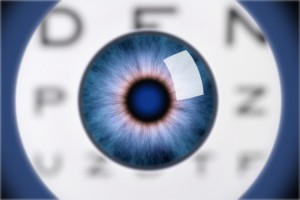Epi-LASIK is being embraced by the world and has now emerged as the permanent solution to a person’s dependence on contact lenses and eyeglasses. More and more people are choosing this no-cut, no-flap, surface-based laser vision correction surgery over the conventional one, which is the LASIK method in reputable lasik Singapore clinics like Clearvision. Medical experts recognize Epi-LASIK in SIngapore to be highly safe and reliable in producing patient suitability and superior visual outcomes.

The Procedure of Epi-LASIK
In Epi-LASIK, the whole process of vision correction happens on the cornea’s surface, without having to cut a cornea flap.
What happens is, first in LASIK in Singapore, there is a suction ring that is put over the eye to make it steady. Then, a tissue separator is arranged in line with the suction ring. After that, the tissue separator moves across the surface of the cornea to gently get rid of the superficial epithelium layer on the surface. After which, both the suction ring and the tissue separator are removed. Now that the superficial epithelium layer is gone, the cornea tissue below has been exposed, making it ready for laser correction.
The next procedure is laser correction during your Singapore lasik surgery clinic. Excimer laser, or exciplex laser, is applied to remove tissue, thus reshaping the cornea. To protect the cornea, the patient is advised to wear a bandage contact lens for three to four days. The bandage contact lens will function as an artificial cornea flap for the meantime, providing protection for the cornea as the epithelium regenerates.
Once the epithelium has fully recovered, that is after about three to four days, the bandage contact lens can now be removed and the vision of the patient has been corrected.
LASIK and Epi-LASIK Compared
1. No-cut, No-flap
In the Epi-LASIK procedure, there is no need to cut into the cornea. Vision correction is done by removing only the topmost epithelium layer of the cornea. In contrast, the cornea requires to be cut in the conventional LASIK procedure.
Since the cornea flap will not be cut in Epi-LASIK, and the process of laser sculpting plus reshaping will only take place at the surface of the cornea, there is no danger of having flap-related complications like infection, inflammations, wrinkles and dislodgement. All of these can occur in the conventional LASIK, in which cutting into the cornea can create a flap, leading to complications.

2. Preservation of Cornea Structure
Since the cornea flap will not be cut in Epi-LASIK, the cornea structure can be preserved. The strength of the cornea is not weakened and there is less damage done. Medical complications can be kept at bay. Preserving the cornea structure is impossible for LASIK, since a flap in the cornea is created.
3. Preparation for Future Age-related Eye Surgeries
In Epi-LASIK, cornea tissue and structure is preserved. This is important should you need to undergo age-related eye surgeries in the future. Our eyes age naturally, and we may experience age-related eye problems such as presbyopia as we grow older. In SIngapore LASIK, it is impossible to preserve cornea tissue and structure.
4. Suitable for Almost Everyone
Those individuals who were previously disallowed to have LASIK treatment due to their flat-shaped or thin cornea can still have their vision corrected through Epi-LASIK.